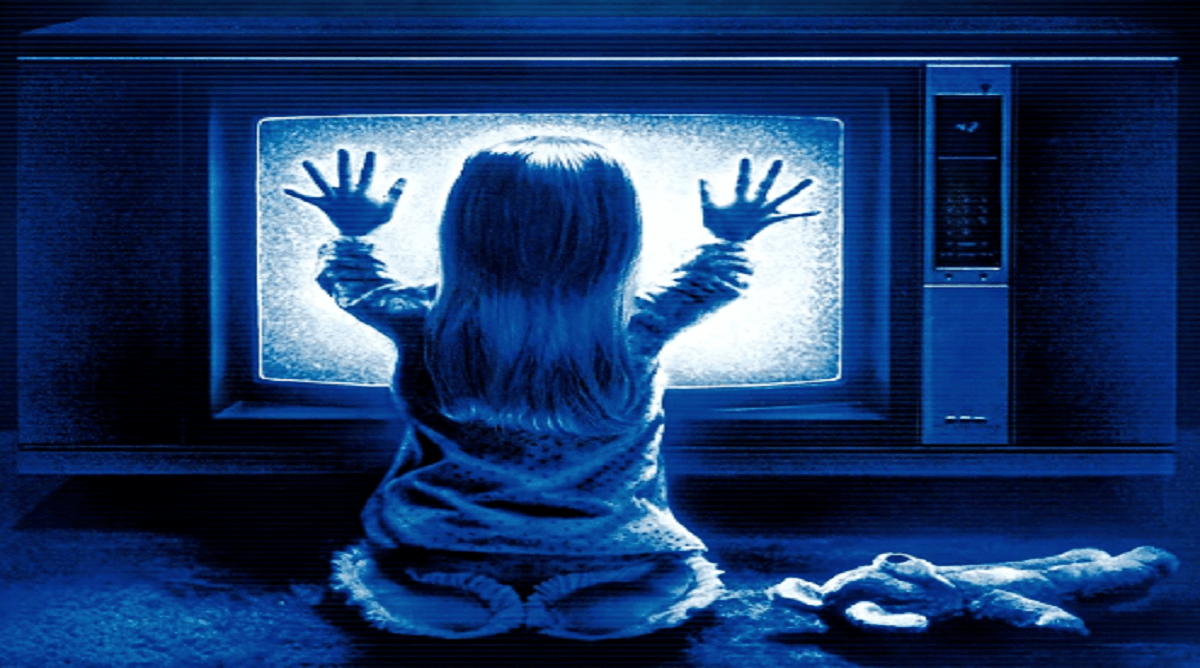A review of The 1982 Movie Poltergeist Used Real Skeletons as – Tymoff

In the realm of horror movies, “Poltergeist” stands as a classic and influential film released in 1982. Directed by Tobe Hooper and produced by Steven Spielberg, this supernatural thriller captivated audiences with its terrifying storyline and groundbreaking special effects. However, behind the scenes, a dark and controversial secret remained hidden until later, revealing the use of real human skeletons during the film’s production. In this article, we will delve into the intriguing history of “Poltergeist” and the uproar surrounding its use of authentic skeletal remains.
The Genesis of “Poltergeist”
The creation of the 1982 movie poltergeist used real skeletons as – tymoffcan be traced back to the collaboration between director Tobe Hooper and producer Steven Spielberg. Spielberg’s fascination with the supernatural and Hooper’s mastery of horror led to the birth of this iconic film. “Poltergeist,” tells the chilling tale of a family whose suburban home becomes haunted by malevolent spirits.
The Infamous Skeleton Scene
One of the most memorable scenes in the 1982 movie poltergeist used real skeletons as – tymoff involves a swimming pool filled with skeletal remains. As the characters uncover the dark secrets of their home, the pool erupts with ghostly apparitions and decaying corpses. This spine-chilling sequence left a lasting impression on viewers, but it also raised questions about the authenticity of the skeletons used.
The Use of Real Skeletons: Unveiling the Truth
In a shocking revelation, it was later disclosed that real human skeletons were indeed utilized during the filming of “Poltergeist.” Due to the cost of acquiring realistic props and time constraints, the production team sourced actual skeletal remains from a medical supply company. These skeletons, originally intended for scientific study, found their way into the haunting visuals of the film.
Ethical and Legal Implications
The use of real human skeletons in “Poltergeist” sparked a wave of ethical and legal concerns. The fact that these remains were once living individuals raised questions about consent and respect for the deceased. Additionally, there were debates over whether proper permissions and protocols were followed during the acquisition and use of the skeletons.
Impact on the Cast and Crew
The revelation of using real skeletons had a profound impact on the cast and crew of “Poltergeist.” Many felt disturbed and unsettled by the knowledge that they had interacted with actual human remains during the filming process. This revelation created a sense of unease and cast a shadow over the otherwise successful production.
The Legacy of “Poltergeist”
Despite the controversy, “Poltergeist” became a milestone in the horror genre and left an indelible mark on popular culture. It pioneered the use of cutting-edge special effects and storytelling techniques that continue to influence filmmakers today. However, the shadow of the real skeleton controversy lingers, reminding us of the ethical responsibilities of the entertainment industry.
Debunking the Myths
Over the years, several myths and rumors have circulated regarding the use of real skeletons in “Poltergeist.” Some claim that the curse of the film was a result of the actual remains, linking the eerie occurrences surrounding the movie to the presence of the skeletons. However, there is no substantial evidence to support these claims, and they remain as urban legends associated with the film.
The Evolution of Special Effects
The 1982 movie poltergeist used real skeletons as – tymoff played a significant role in the advancement of special effects in filmmaking. By seamlessly blending practical effects, animatronics, and traditional makeup, the movie pushed the boundaries of what was possible at the time. The success of “Poltergeist” spurred the development of more realistic and immersive visual effects in subsequent horror films.
Influences on Horror Cinema
“Poltergeist” left an undeniable impact on the horror genre, influencing future filmmakers and shaping the direction of supernatural storytelling. Its innovative use of suspense, tension, and paranormal elements helped redefine the way horror movies were made. Many subsequent films drew inspiration from “Poltergeist,” perpetuating its influence in the genre.
The Importance of Ethical Filmmaking
The controversy surrounding “Poltergeist” serves as a reminder of the ethical obligations of the filmmaking industry. It highlights the need for transparency, respect, and responsible decision-making when it comes to sourcing props and materials for movie productions. Filmmakers should prioritize the ethical treatment of both the living and the deceased, ensuring that their creative vision does not compromise human dignity.
The Responsibility of the Filmmaking Industry
In light of the “Poltergeist” controversy, the filmmaking industry must take steps to establish clear guidelines and protocols for the use of props, including skeletal remains. This responsibility extends to all aspects of filmmaking, ensuring that the boundaries between fiction and reality are respected and that ethical practices are upheld throughout the production process.
The 1982 Movie Poltergeist Used Real Skeletons as
The 1982 movie “Poltergeist” controversially used real human skeletons during the production. Due to budget constraints, the filmmakers opted for actual skeletons instead of expensive synthetic props for a haunting swimming pool scene. This decision stirred up ethical concerns and superstitions on set, contributing to the film’s reputation for being cursed. Despite the controversy, “Poltergeist” remains a classic in the horror genre.
Conclusion
“Poltergeist” remains an iconic horror film, but its legacy is tainted by the revelation of its use of real human skeletons. The controversy surrounding the film serves as a cautionary tale for the entertainment industry, emphasizing the importance of ethical decision-making and responsible filmmaking practices. As audiences continue to enjoy the thrills and scares of horror movies, it is crucial to remember the ethical boundaries that must be upheld in the pursuit of cinematic excellence.


